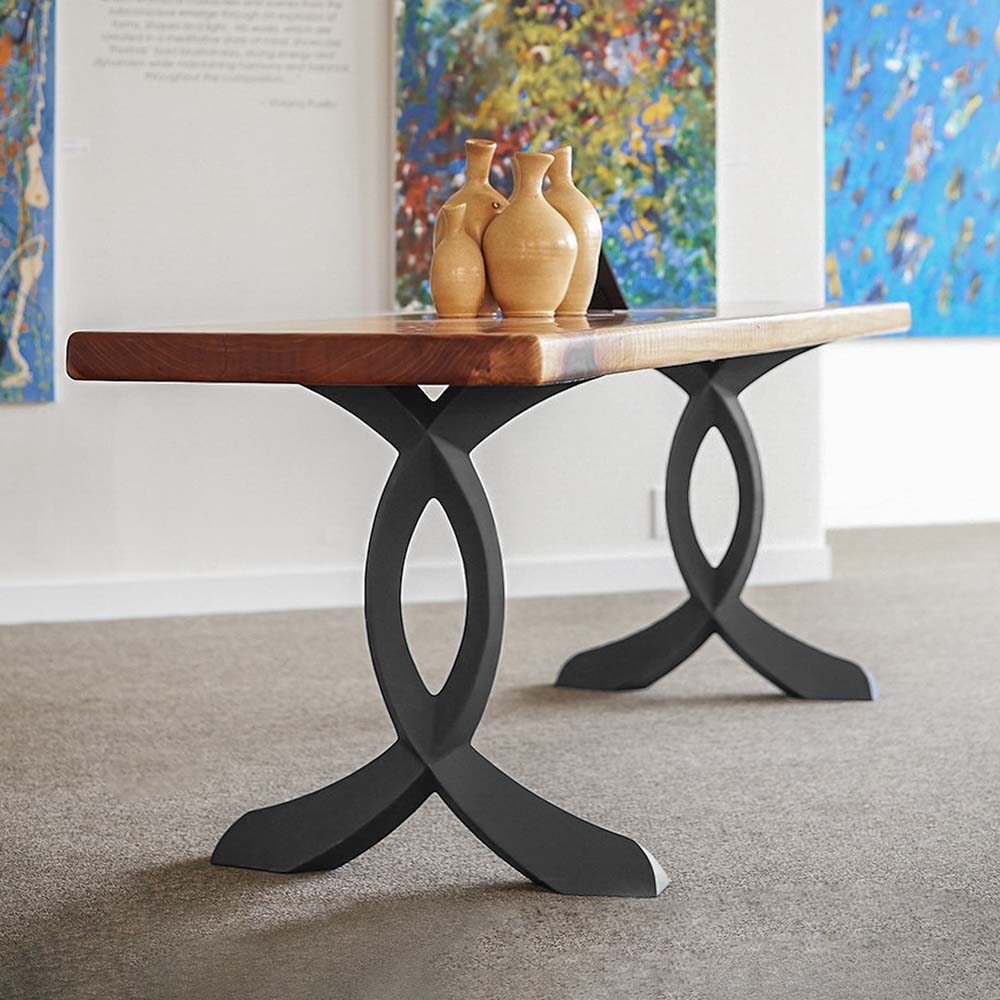The Ultimate Guide to Picking Resilient Dining Room Table Legs
The Ultimate Guide to Picking Resilient Dining Room Table Legs
Blog Article
A Detailed Check Out Table Leg Styles: Discovering the Suitable Suit
Selecting the ideal eating table leg design is vital for both visual appeal and sensible performance. For those with larger tables, trestle legs ensure strong assistance, whereas hairpin legs present a mid-century modern-day ambiance with their minimal layout. The x-shaped legs blend modern design with enhanced security.
Conventional Four Legs
Among the different kinds of eating table leg styles, the typical four-leg style continues to be a timeless selection for many families. Four legs supply well balanced support, ensuring the table remains stable and capable of birthing significant weight (dining room table legs).
From a visual point of view, the conventional four-leg style can be quickly adapted to different indoor designs. Whether crafted from timber, metal, or a mix of materials, these legs can be elaborately sculpted, streamlined and minimalistic, or anything in between. Their versatility allows them to match both rustic and modern settings perfectly.
Moreover, the straightforward structure of the four-leg layout facilitates ease of motion and positioning within a room. Unlike even more facility bases, this design lessens obstructions, offering enough legroom for restaurants. In recap, the conventional four-leg table leg design weds sustaining sophistication with functional performance, making it a sharp choice for those looking for both kind and feature in their dining furniture.
Pedestal Base
Often commemorated for its sophisticated and space-efficient style, the pedestal base is a recognized choice to the conventional four-leg setup in dining table leg designs. This distinctive base generally includes a solitary central column supporting the tabletop, which can vary in form, from ornately sculpted timber to sleek, modern steel. Among the main advantages of the pedestal base is its capacity to optimize legroom and seating versatility. Without corner legs, restaurants are paid for better flexibility of motion, making it a suitable option for round and oval tables that promote more intimate and inclusive gatherings.
Furthermore, the stand base's main support can handle considerable weight, permitting for the use of much heavier table tops, such as marble or thick wood. This toughness coupled with its aesthetic adaptability makes the pedestal base a prominent selection in both conventional and contemporary indoor settings. It can effortlessly integrate with different design styles, from classic elegance to minimal modernity. The central column itself provides a canvas for intricate styles and imaginative expressions, including an aspect of visual interest below the table. In recap, the pedestal base combines functionality snappy, making it a refined and functional option for varied dining atmospheres.
Trestle Legs
Trestle legs offer a durable and classic foundation official site for eating tables, defined by their straight cross-bracing and durable assistance beams. Stemming from medieval times, this design has actually advanced yet maintained its vital framework, making it a perennial favorite in both typical and modern setups. The central trestle beam of light, typically sustained by two or even more vertical articles, provides remarkable security, permitting bigger table sizes without the requirement for additional legs.
A substantial benefit linked here of trestle leg tables is the ample legroom they supply. Unlike tables with four corner legs, the absence of obstructions at the table's sides offers unblocked room for chairs and diners, boosting comfort and accessibility. This makes trestle tables ideal for accommodating bigger celebrations, whether in a dining-room or a banquet hall.
From rustic farmhouse to sleek contemporary designs, trestle legs can be tailored to match individual tastes. Their enduring allure and practical benefits make trestle legs an engaging option for those seeking both design and usefulness in their eating table.
Hairpin Legs

The charm of barrette legs hinges on their simpleness and adaptability - dining room table legs. Available in a series of products, consisting of steel and brass, they can be finished in numerous colors to complement different indoor designs. Whether coupled with a rustic wooden table top or a contemporary glass surface, hairpin legs effortlessly blend capability with a touch of vintage beauty
Toughness is one more remarkable feature of barrette legs. Regardless of their delicate appearance, these legs are crafted to bear considerable weight, ensuring the dining table stays steady and protected. Furthermore, they are fairly easy to mount, making them a prominent option for DIY fanatics and professional furniture manufacturers alike.
X-Shaped Legs

Constructed from materials such as steel, wood, or a mix of both, X-shaped legs can be customized to match different style preferences. Steel legs commonly lend a streamlined and commercial feel, perfect for loft-style homes and contemporary eating rooms.
Moreover, the engineering behind X-shaped legs guarantees even weight distribution, decreasing the risk of tottering and boosting resilience. This index makes them specifically appropriate for bigger table that require additional support. Basically, X-shaped legs blend functional engineering with modern-day visual appeals, making them a classic choice for diverse eating settings.
Verdict
An extensive understanding of dining table leg designs reveals the distinctive attributes and benefits of each design. Trestle legs ensure durable assistance for bigger tables, and hairpin legs introduce a mid-century contemporary aesthetic.
Report this page